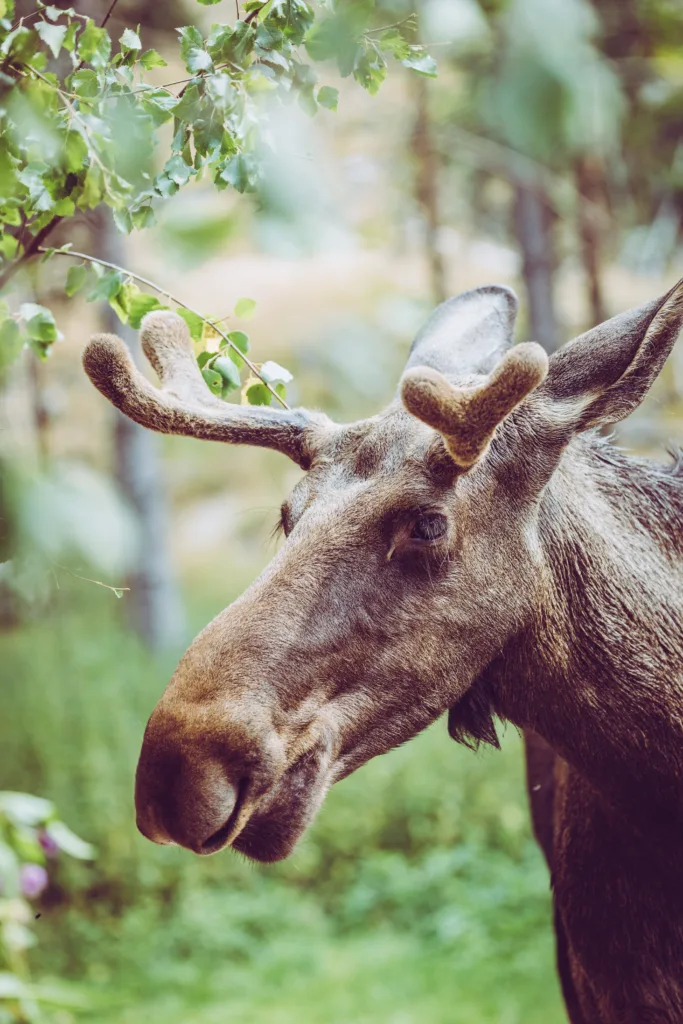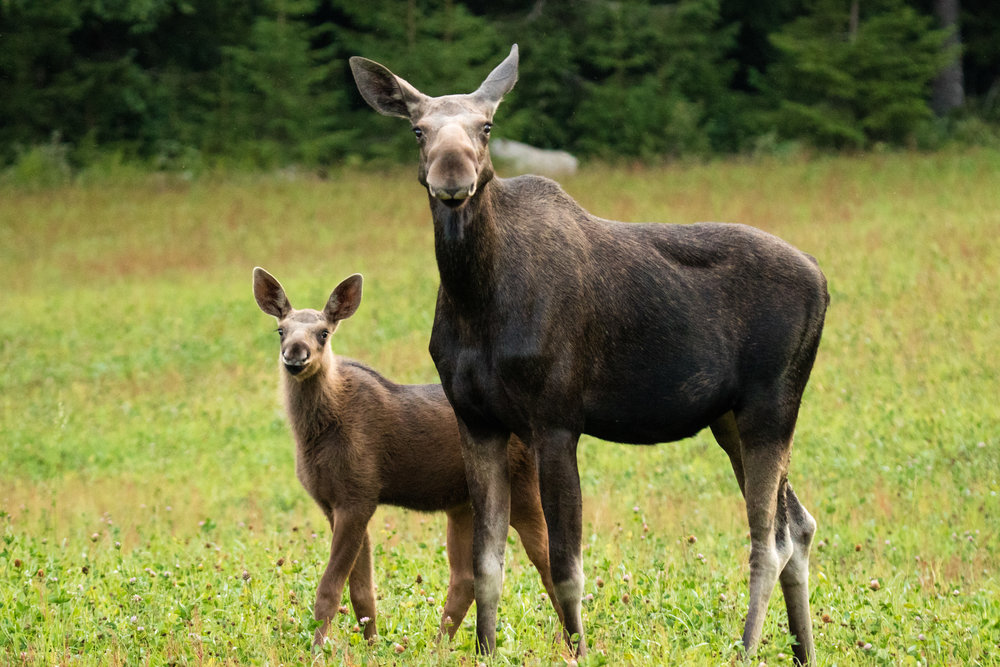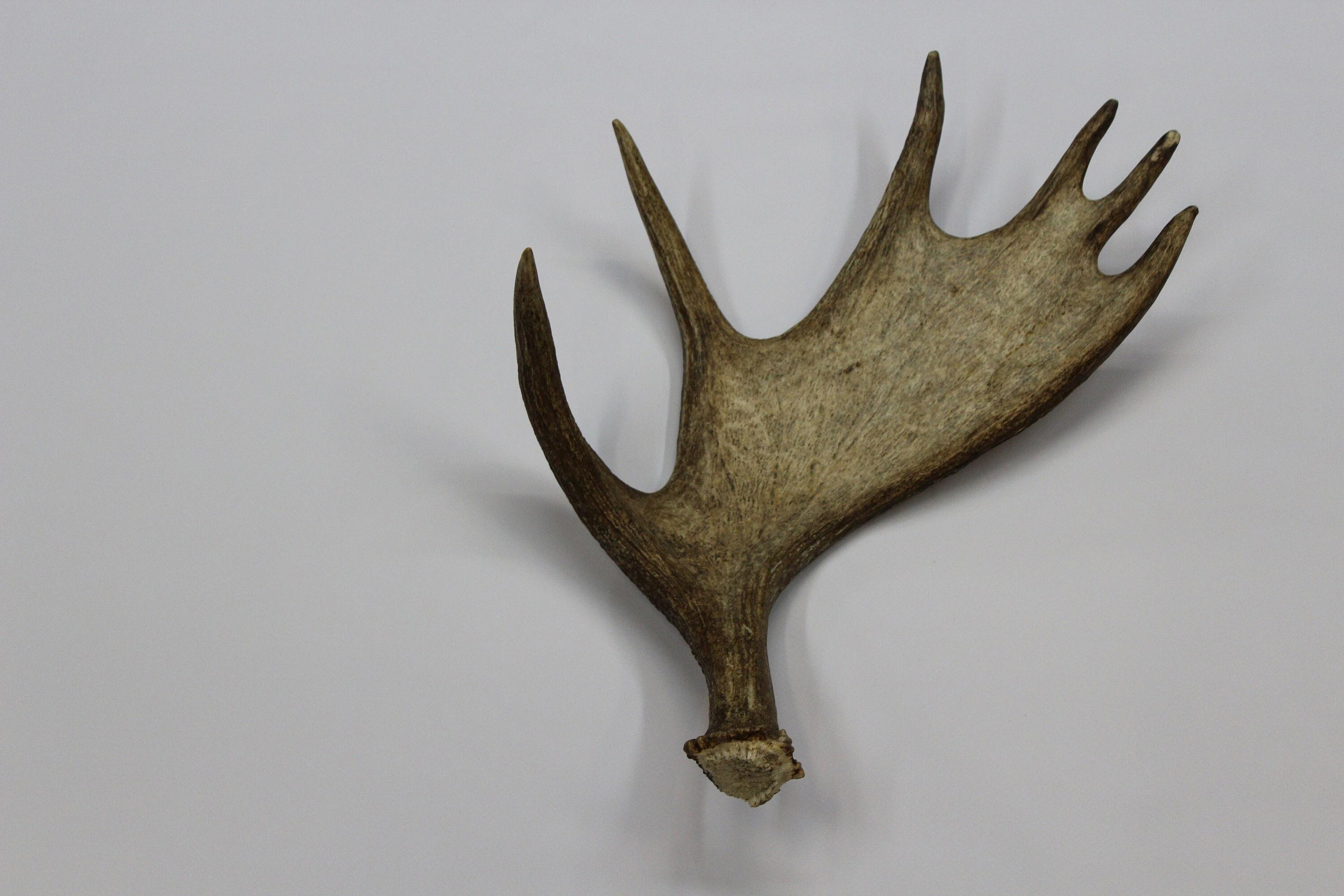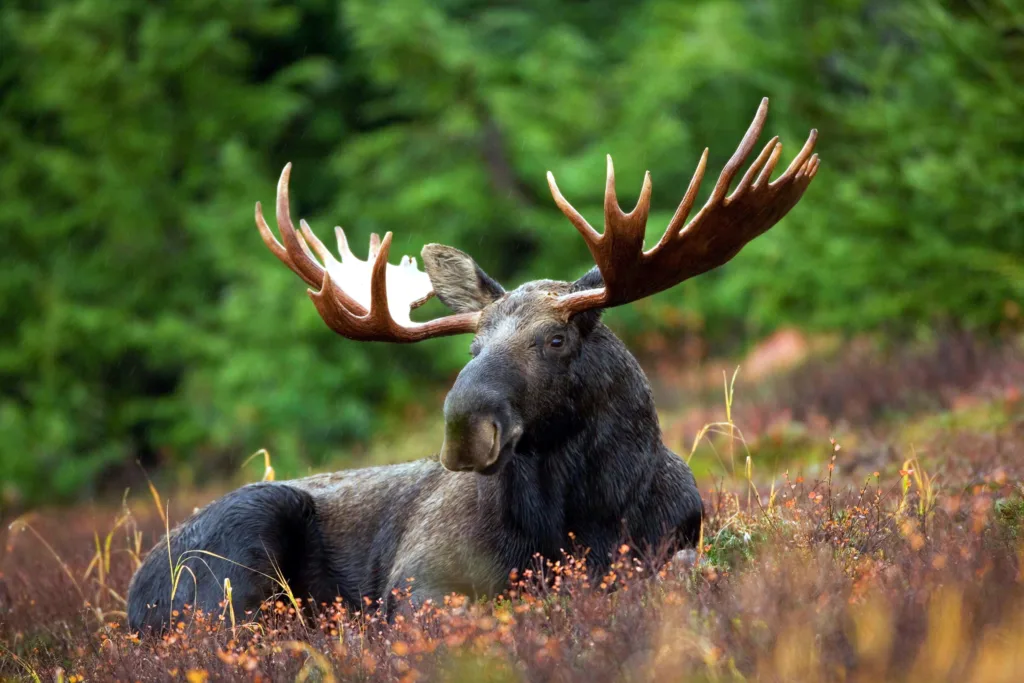Female moose, also known as cows, are majestic creatures that roam the forests and wetlands of North America. They are an important part of the ecosystem, providing food for predators like wolves and bears, and helping to maintain the balance of plant life in thir habitats. But do female moose have antlers like their male counterparts?
The answer is no, female moose do not have antlers. Antlers are actually an extension of the male moose’s skull, made of bone that grows each year through the spring and summer. They serve a variety of purposes, from attracting mates to establishing dominance over other males during the breeding season. But females do not need antlers for these purposes, as they do not compete with each other for mates or territory.
Instead, female moose have other physical adaptations that help them survive and thrive in their environments. For example, they have a hump on their shoulders that is made of muscle and helps them to dig through snow to find food in the winter. They also have wider hips than males, which makes it easier for them to give birth to and care for their young.
Female moose are typically smaller than males, but they are still impressive animals in their own right. Adult females can weigh anywhere from 800 to 1,300 pounds, and they have powerful legs and sharp hooves that help them navigate through the dense forests and marshy wetlands where they live. They are also excellent swimmers, able to cross bodies of water with ease.
While male moose may be known for their impressive antlers, female moose have their own set of unique adaptations that make them well-suited to their environments. From their humps and wide hips to their powerful legs and sharp hooves, these animals are a testament to the incredible diversity of life on our planet.
Do Female Moose Have Antlers?
No, female moose, also known as cows, do not have antlers or a rack. Antlers are made of bone and are an extension of the male moose’s skull. Male moose, or bulls, grow antlers every year during the spring and summer months. Antlers are used for mating rituals and to establish dominance during the breeding season. Female moose, on the other hand, do not need antlers for thee purposes and therefore do not grow them. Instead, cows use their sense of smell to find a mate and typically rely on their size and strength to defend themselves and their calves from predators.

Determining the Gender of a Moose
To distinguish between a male and female moose, you can look for a few key physical characteristics. The most obvious difference is the presence of antlers, which only male moose possess. These antlers can spread up to 5 feet across from tip to tip and are shed and regrown annually. If a male moose has recently shed its antlers, you can still see scars on either side of its head were new antlers will soon start growing. In contrast, female moose do not have antlers and do not have any scarring on their heads. Additionally, male moose tend to be larger than females and have a more prominent hump on their shoulders. By observing these physical traits, you can easily determine whether a moose is male or female.
Do Mom Moose Have Antlers?
No, mom moose, or female moose, do not have antlers. Only the male moose or bulls have antlers, which are branched structures that grow out of their skulls. The antlers are used for various purposes, including attracting mates, establishing dominance, and defending against predators. Female moose, on the other hand, do not have antlers but are known for their distinctive facial features, including a long snout, large ears, and a pronounced hump on their backs. They are typically smaller in size compared to male moose and are responsible for caring for their young or calves.
The Gender of Moose Antlers
Moose antlers are typically found on male moose, also known as bulls. These antlers are large, palm-like structures that begin to grow in the spring and summer months, reaching their full size by August. A bull’s antler spread can typically reach four to five feet wide, although the largest ever recorded was 81 inches. However, female moose, also known as cows, do not have antlers. Instead, they have smaller, less noticeable bumps on their heads where antlers would typically grow. Bulls will shed their antlers each year in either December or January, only to regrow them the following spring.
Is a Female Moose Referred to as a Doe?
No, a female moose is not called a doe. A female moose is called a Cow Moose. Moose are a part of the deer family, but they differ from other deer species in many ways. While most deer species have a typical male-female naming convention, Moose have ther own unique names. The male moose is called a Bull Moose, while the female is called a Cow Moose. It’s important to note that the term “doe” is typically used to refer to female deer of the species Odocoileus, such as white-tailed deer or mule deer. Therefore, it is not correct to refer to a female moose as a doe.

Milking Female Moose: Is It Possible?
Yes, it is possible to milk a female moose. Moose milk is high in nutrients and has a high fat content, making it a desirable milk source for some people. However, milking a moose requires a lot of patience and skill, as moose are not domesticated animals and can be easily spooked. A dairymaid must establish a relationship with the moose and slowly get her comfortable with being milked. Buckets of oats can be used to keep the moose still wile in the milking stall. On average, a female moose can produce between 1 and 6 liters of milk per day. Once a moose becomes comfortable with the dairymaids, she will often allow bilateral milking. It is important to note that milking a moose should only be done by experienced professionals, as moose can be dangerous and unpredictable animals.
Do Female Moose Experience Menstruation?
Female moose do not have a menstrual cycle like humans or other primates. However, they do have an estrous cycle, which is also commonly referred to as their reproductive cycle. The estrous cycle is the period of time during which the female moose is receptive to mating and capable of conceiving offspring. The average length of the estrous cycle for moose is about 24 days, but it can range from 22-28 days.
During the estrous cycle, the female moose will experience a period of heat, which is when she is most receptive to mating. This period of heat typically lasts from 1-36 hours and is the only time during the estrous cycle when the female will accept a male for mating. If the female is not bred during this time, she will have up to six recurrent estrous cycles before the cycle starts again.
In summary, wile female moose do not have periods like humans, they do have an estrous cycle that allows for reproduction and includes a period of heat during which they are receptive to mating.
Types of Moose Species
There are three recognized species of moose: the Eastern Moose, the Western Moose, and the Alaska Moose. The Eastern Moose can be found in Eastern Canada and the Northeastern United States, whle the Western Moose ranges from British Columbia to western Ontario, Michigan’s Upper Peninsula, northern Wisconsin, Minnesota, and North Dakota. The Alaska Moose, as the name suggests, is found in Alaska and the Western Yukon. These three species vary in size and coloration, with the Alaska Moose being the largest and the Eastern Moose being the smallest. Despite their differences, all three species are impressive creatures known for their distinctive antlers and imposing presence in the wild.
Three Interesting Facts About Moose
Sure, here are three interesting facts about moose:
1. Moose have a flap of skin under their chin called a bell. This bell can be up to 30 cm long and is covered in long hair. Scientists believe the bell helps moose communicate with each other, as it amplifies their calls during mating season.
2. Moose are known by many diffeent names, including rubber-nosed swamp donkeys, due to their long noses and love of wetlands. They are also the largest members of the deer family, with males (bulls) weighing up to 700 kg and standing over 2 metres tall at the shoulder.
3. Moose calves are capable of running just hours after being born and by the time they are only five days old, they can outrun a human. This is a useful adaptation, as moose need to be able to keep up with their mothers in order to avoid predators such as wolves and bears. Additionally, moose are incredibly strong and can kick in any direction with their front hooves, making them formidable opponents if they feel threatened.

Source: etsy.com
The Only Female Animal With Antlers
Actually, there is no one specific female animal that has antlers. However, in most deer species, only the males grow antlers, while female reindeer are the only ones that also grow antlers. This is because female reindeer need antlers to compete for food in the winter, and to establish dominance within their herd. So, while there is not one specific animal that is the only female with antlers, it is only female reindeer that have this unique characteristic.
Can a Male Moose Lack Antlers?
No, a male moose cannot have no antlers. Antlers are a distinguishing feature of male moose, and their growth is regulated by testosterone. While antlers may vary in size and shape, it is very rare for a male moose to have no antlers at all. In fact, the absence of antlers in a male moose could indicate a health problem or a hormonal imbalance. Therefore, it is safe to say that male moose always have antlers, and their size and shape can vary depending on factors such as age, genetics, and nutrition.
Can Female Deer Have Antlers?
In general, female deer, also known as does, do not grow antlers. Antlers are primarily a male characteristic and are used for various purposes such as attracting mates, establishing dominance, and defending territories. However, there is one species of deer in which females do grow antlers, and that is the reindeer, also known as caribou. In reindeer, both males and females grow antlers, and the antlers of the female reindeer are typically smaller than tose of the males. It’s important to note that this is an exception to the general rule, and in most other deer species, female deer do not grow antlers.
The Name of a Male Moose
No, a male moose is not called a buck. The term “buck” is commonly used to refer to male deer, but not moose. A mature male moose is called a bull, which can weigh up to 1500 pounds and has large antlers that can span up to six feet. On the other hand, a female moose is called a cow, and an immature moose of either sex is called a calf. It is important to use the correct terminology when referring to different species to avoid confusion and ensure clear communication.

The Fate of Moose Antlers After Shedding
When moose antlers fall off, they are left on the ground where they eventually decompose. Antlers are made of bone, and as they break down, they release important nutrients back into the ecosystem. These nutrients can be absorbed by plants and oher organisms, contributing to the overall health of the ecosystem. Additionally, antlers that are not completely decomposed can provide a source of calcium and other minerals for smaller animals to consume. Moose themselves may also consume their shed antlers as a source of nutrients. Shed antlers can also be collected by humans for decorative or artistic purposes, but it is important to ensure that they are obtained legally and ethically.
Conclusion
In conclusion, female moose, also known as cows, do not grow antlers. Unlike the male or bull moose, they do not have a bony extension of the skull, which forms the impressive headgear. While male moose grow their antlers each year through spring and summer, only the males have antlers, which can spread as much as 5 feet acrss from tip to tip. Female moose are generally smaller in size than males, weighing between 800 to 1,300 pounds. Although female moose do not grow antlers, they are an important part of the ecosystem as they play a crucial role in the reproduction and survival of the species. Overall, understanding the differences between male and female moose is essential to appreciate the unique characteristics of these magnificent animals.
